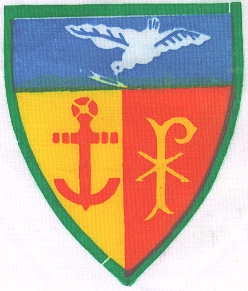 BRIEF
HISTORY OF NAMILYANGO COLLEGE
BRIEF
HISTORY OF NAMILYANGO COLLEGE
|
|
Namilyango
College, one of the oldest boarding secondary school in Uganda, was
founded on 23rd March 1902 by the Mill Hill Fathers. The missionaries
had come to Uganda in 1895 to help break down the mentality of many
of the peasantry, that 'Protestantism is English and Catholicism is
French.' Thus with this in mind, the Mill Hill Fathers of British origin
wanted to demystify this erroneous picture.
In March 1902, Bishop Hanlon, the first Mill Hill Bishop in Uganda, started what was later to become Namilyango College, with a two-fold purpose; To train Catechists needed for evangelisation; To educate sons of Chiefs. The aims and objectives of the school were summarized in the motto 'Education for Responsibility' which was adopted to guide the students and teachers alike. Later, the motto 'NISI DOMINUS' was adopted to give the students a sense of religious devotion, in line with the strong Catholic Foundation of the school. In what appeared to be a diversion from what was expected of a school or an institution with a strong Christian foundation, Bishop Hanlon emphasized the need and quest for a satisfactory system of free discipline. Bishop Hanlon emphasized that except during class hours, the boys would be without supervision, as that would positively contribute to the formation of their character. The school was aware that rigid supervision of the students' spare time activities would be detrimental to their character development. The school thus developed a liberal tradition at the very time of its inception, and 95 years later, the tradition has been maintained. And this tradition has, among other things, led to the establishment of the unique position of the school. Barely after four years, the new school however began to be affected by changes. In September 1906, the catechists who constituted a certain percentage of the students in Namilyango, were transferred to another institution which had been created for that purpose. After this move, the school's name was changed to 'Sacred Heart Namilyango High School.' But the 'Sacred Heart' was never popular. It never came out to be identified as the name of the school. Thus at that time, the school was largely known as 'Namilyango High School.' In
1907, another change come about. Fr. Philip Jackson, the headmaster,
was told that in addition to his duties as headmaster, he was also to
take up duties as a Pastor of the area, an area which was later to become
Namilyango Parish. This new arrangement meant new responsibilities for the headmaster, and meant that in effect, the school and the parish were to be inextricably linked. This arrangement was welcomed but was not permanent. Thus in September, 1912 the parish was once again separated from the school, each with its own head. In August 1929, the Brothers of Christian Instruction order (The Kisubi Brothers) took over the school and named it 'St. Aloysius College.' However, after three years, the Mill Hill Fathers took it over again in 1932, under Fr. P. Preyde. For along time afterwards the school was subjected to many changes which were occasioned by the government and the church policies. For example government introduced a new system of naming schools whereby secondary schools which were boarding were to be called Colleges. Thus, the school became Namilyango College. Between 1941-1945, new dormitories were built and enrollment rose to 125 students in 1945. In 1943 earlier on, the school had been chosen as one of the self governing schools of the Protectorate under the terms of The Thomas Report. In the same year, Cadet Corps and Boxing Clubs started. For the period that the school existed, it became literary engrossed in the national and regional affairs of the country. Between 1902, and the eve of Uganda's independence, Namilyango College had already curved out a name for itself, as one of the most prominent institutions in the country. Towards independence, many of the students who had passed through the school had occupied important positions in the civil service, society and pre-independence politics. While many of the schools in Uganda today were just starting, Namilyango College had gone at least one step ahead. But it remained an 'O' level institution In 1960, towards independence, the school was granted 'A' Level thus becoming a full-fledged 'A' Level boarding school for boys. Since the school was founded, the following have been its Headmasters: 1. Fr. J. Minderop MHM (1902-04) 2. Fr. Keller MHM (1904-06) 3. Fr. P. Jackson MHM (1907-11) 4. Fr. Toner MHM (1911-) 5. Fr. T. Matthew MHM ( ) 6. Fr. J. Mertues MHM (19-- -29) 7. Br. Anatus BCI ( ) 8. Br. Eugene BCI ( ) 9. Fr. P. Preyde MHM (1932-34) 10. Fr.B. Doyle MHM (1934-53) 11. Fr. Hewston MHM (1953-59) 12. Fr.B.A. Kuipers MHM (1959-70) 13. Fr. B. Hayes MHM (1970-72) 14. Mr. Francis Mayanja (1972-73) 15. Mr. Alfred Mugoda (1973-86) 16. Mr. Peregrine Kibuuka (1986 - Feb 2002) 17. Ms. Dorothy Matovu (Feb. 2002 - Nov. 2002) 18. Mr. Gerald Muguluma (Nov. 2002 - Todate) |